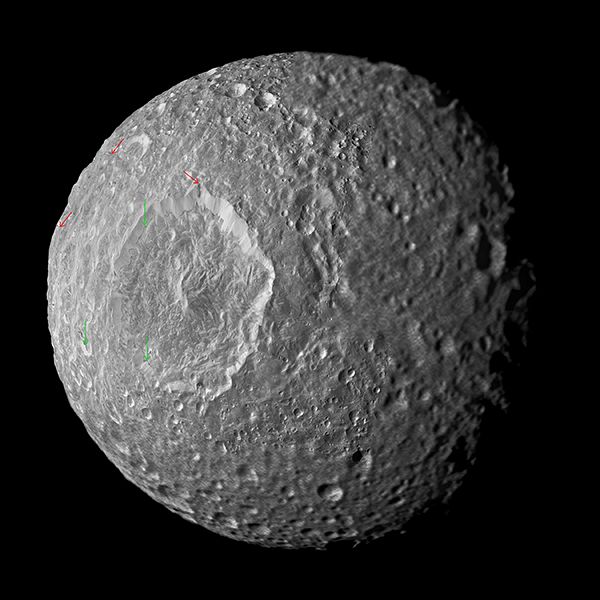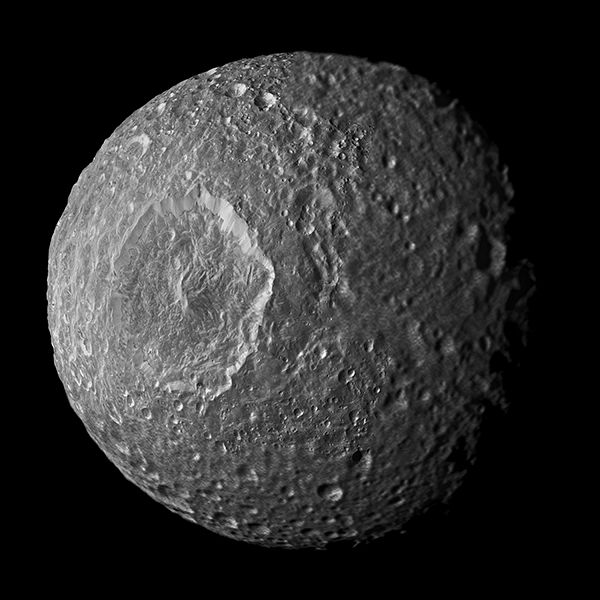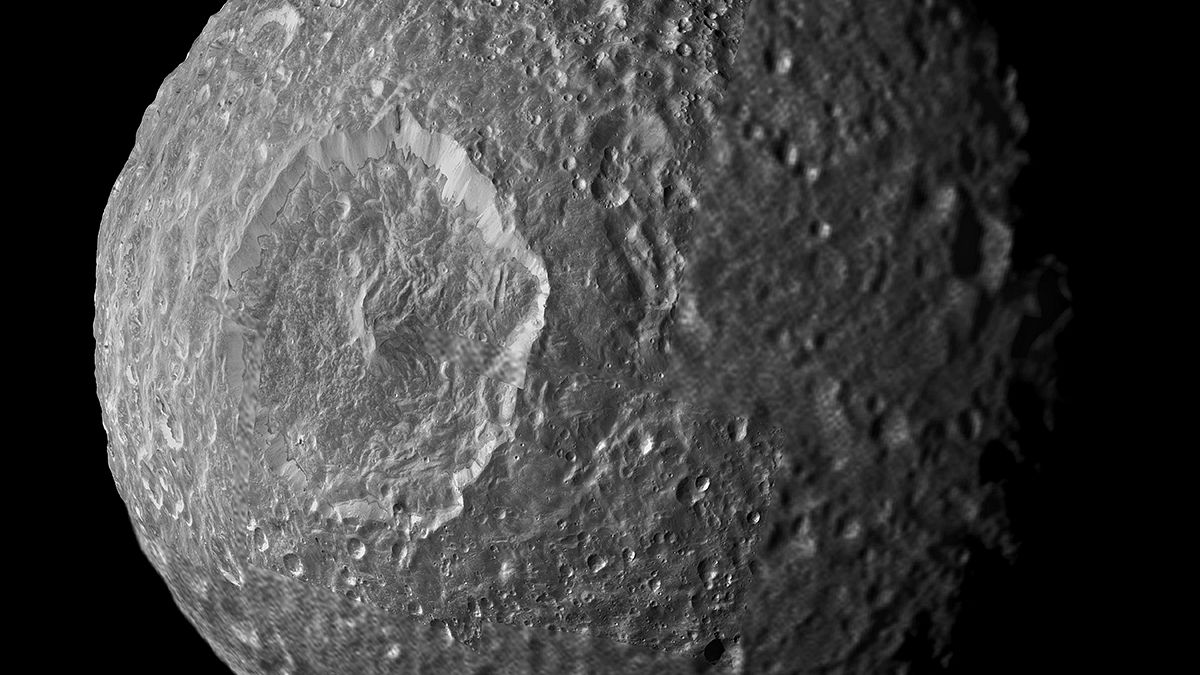Saturn’s battered moon Mimas may have a thin global ocean buried miles beneath its icy surface, raising the prospect of another “life-friendly” habitat in the solar system, scientists said on Thursday.
An underground ocean is one of two explanations for why the 400-mile (250-km) diameter moon wobbles as it orbits around Saturn, scientists using data from NASA’s Cassini spacecraft said. The other possibility is that Mimas has an oblong or rugby ball-shaped core. Follow-up measurements should provide more answers, the scientists said.
Either way, the findings point to a more complex and intriguing history for a moon best known for a large crater that dominates its surface, making it look like the “Death Star” from the movie “Star Wars.”

“If Mimas does have an ocean, this would definitely be another interesting body in the solar system to be added to list of potential ‘life-friendly’ environments,” Radwan Tajeddine, a research associate in Cornell University’s astronomy department, wrote in an email to Reuters.
“The ocean hypothesis sounds unlikely because … Mimas’ heavily cratered surface has shown no evidence of liquid water, thermal heating or geological activities,” researchers wrote in an article published in this week’s issue of the journal Science.
But a closer look at Mimas’ eccentric orbit provides a clue. Gravitational tugging by Saturn as the moon circles closer and then farther away from the planet could cause enough frictional heating to melt ice and form an ocean.

“This ocean will sustain as long as the orbit is eccentric,” Tajeddine, lead author of the article, wrote in the email to Reuters.
The other idea that Mimas has an elongated core raises a different set of questions about how the moon formed.
One theory is that Mimas, and possibly sister moons Enceladus, Tethys, Dione and Rhea, evolved from a collection of rocky chunks circling close to Saturn. Gravitational forces from Saturn would have sculpted the moon’s core into an oblong shape, which was then covered in ice.
In this scenario, Tajeddine said, the icy shell relaxes and forms a nearly spherical shape while the moon migrates outward. Meanwhile, low temperatures preserve the shape of the oblong core.
Source: Reuters
